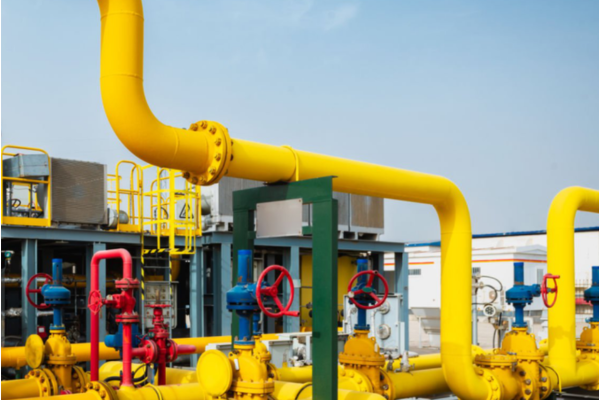Welcome to the world of piping estimating services! Whether you’re an engineer stepping into estimating for the first time or just brushing up your skills, understanding how to accurately estimate piping projects is crucial. Precise estimates not only save money but also keep projects on schedule and build your reputation as a reliable professional.
Piping systems are complex—they include various materials, labor, and equipment that all need to be accounted for carefully. That’s where expert piping estimating services come in. They help you break down the project, avoid costly mistakes, and deliver accurate bids that win jobs and keep clients happy.
If you’re just starting out, this blog is your friendly guide to expert piping estimating services tailored especially for engineers. We’ll walk through the basics, a step-by-step estimating process, share practical tips, and help you build confidence in your estimates. Ready? Let’s dive in!
Why Piping Estimating Services Matter for Engineers
Engineers often focus on design and technical details, but when you understand estimating, you add a powerful skill to your toolkit. Piping estimating services help bridge the gap between design and execution by translating blueprints and specs into numbers that drive budgets and timelines.
Expert estimating ensures:
· Accurate budget planning — Avoid overruns by predicting costs early.
· Better project scheduling — Know what resources and time are needed.
· Stronger client trust — Provide clear, reliable bids that reflect reality.
· Improved resource management — Efficiently allocate labor, materials, and equipment.
With expert estimating services, you reduce risks and increase project success. Now let’s break down how you can approach piping estimates step-by-step.
Step-by-Step Guide to Expert Piping Estimating
1. Understand the Project Scope
Before jumping into numbers, fully understand what the piping project entails. Review all design drawings, specifications, and scope documents carefully.
· Identify pipe types, sizes, and materials (carbon steel, stainless steel, PVC, etc.).
· Note the system type: process piping, HVAC, fire protection, etc.
· Understand site conditions—underground, above ground, complex routing.
· Clarify deadlines, quality requirements, and special challenges.
Pro Tip: Ask questions early if anything is unclear. Getting the scope right lays the foundation for a solid estimate.
2. Break Down the Project Into Components
Divide the project into manageable parts:
· Materials: Pipes, fittings, valves, hangers, supports, insulation.
· Labor: Welding, pipefitting, inspection, testing.
· Equipment: Tools, welding machines, scaffolding.
· Subcontractors: Specialty services like coatings or testing.
· Permits & Safety: Regulatory fees and safety measures.
Breaking down helps you focus on key cost areas without missing anything.
3. Quantify Materials
Use project drawings and specs to measure lengths, diameters, and quantities of pipe and fittings.
· Calculate pipe lengths per size and type.
· Count fittings and valves, noting sizes and specs.
· Include allowances for waste and scrap.
Pro Tip: Use takeoff software or spreadsheets to organize quantities and reduce errors.
4. Estimate Labor Requirements
Estimate the number of hours or crew sizes needed for each task.
· Consider pipe installation, welding, testing, and clean-up.
· Use labor productivity rates based on past projects or industry standards.
· Factor in overtime or special shifts if applicable.
Pro Tip: Collaborate with site supervisors or experienced pipefitters to refine labor estimates.
5. Calculate Equipment Costs
Identify what equipment you’ll need and its costs:
· Rental or owned equipment expenses.
· Operation costs including fuel, maintenance, and operators.
· Special equipment for confined spaces or hazardous areas.
6. Add Subcontractor and Other Costs
Include quotes or estimates for subcontracted work such as coating, painting, or specialized testing.
Don’t forget regulatory permits, safety gear, and contingency allowances for unexpected costs (usually 5-15%).
7. Review and Refine
Double-check all numbers, calculations, and assumptions.
· Cross-verify quantities with drawings.
· Confirm labor rates and material prices.
· Ask a colleague to review your estimate for fresh eyes.
This step ensures your estimate is thorough and credible.
Practical Tips for Beginner Engineers in Piping Estimating
· Use Technology: Take advantage of estimating software designed for piping projects. It speeds up calculations and improves accuracy.
· Build a Data Library: Collect historical data from completed projects for reference. Over time, this will make your estimates more reliable.
· Communicate Clearly: Document your assumptions and share your estimate details with project managers and clients. Transparency builds trust.
· Stay Updated: Material prices and labor rates change frequently—keep your data current to avoid surprises.
· Learn from Experience: After project completion, compare your estimate with actual costs. Identify gaps and adjust your future estimates accordingly.
Conclusion:
Estimating may seem daunting at first, but with a systematic approach and the right tools, you’ll quickly develop the skills to deliver expert piping estimates. These estimates are vital for project success, controlling costs, and ensuring smooth execution.
Remember, accuracy comes with practice and good habits. Use this step-by-step guide as your roadmap, lean on experienced colleagues, and never hesitate to ask questions.



